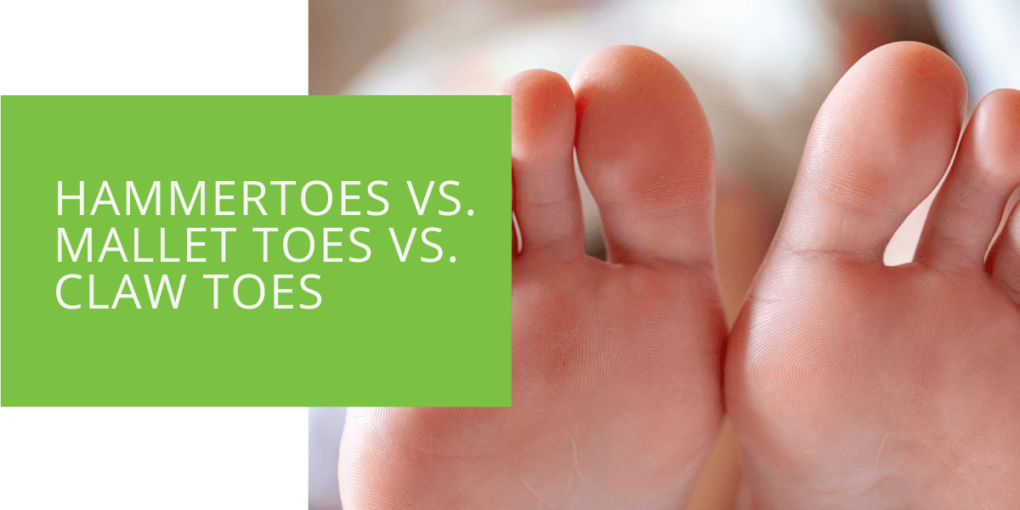Hammertoes vs. Mallet Toes vs. Claw Toes
Hammertoes, mallet toes, and claw toes are all types of toe deformities that can cause discomfort and difficulty wearing shoes. If you've been experiencing problems with your toes and are unsure which type of deformity you have, it's important to understand the differences between these conditions. In this article, we'll go over the symptoms, causes, and treatment options for hammertoes, mallet toes, and claw toes to help you better understand these conditions and how to manage them.
What are Hammertoes?
A hammertoe is a deformity that causes the toe's middle joint to bend downward and the tip of the toe to bend upward, creating a "hammer" shape. This deformity can occur in any toe, but it most commonly affects the second toe.
Symptoms of Hammertoes
The most common symptom of a hammertoe is a corn or callus on the top of the middle joint of the affected toe. Other symptoms may include pain or discomfort when wearing shoes, difficulty moving the affected toe, and a bent appearance of the toe.
Causes of Hammertoes
Several factors can contribute to the development of a hammertoe. Wearing shoes that are too tight or too narrow can cause the toes to be cramped, leading to deformity. Foot injuries, bunions, and certain medical conditions such as arthritis or diabetes can also cause hammertoes.
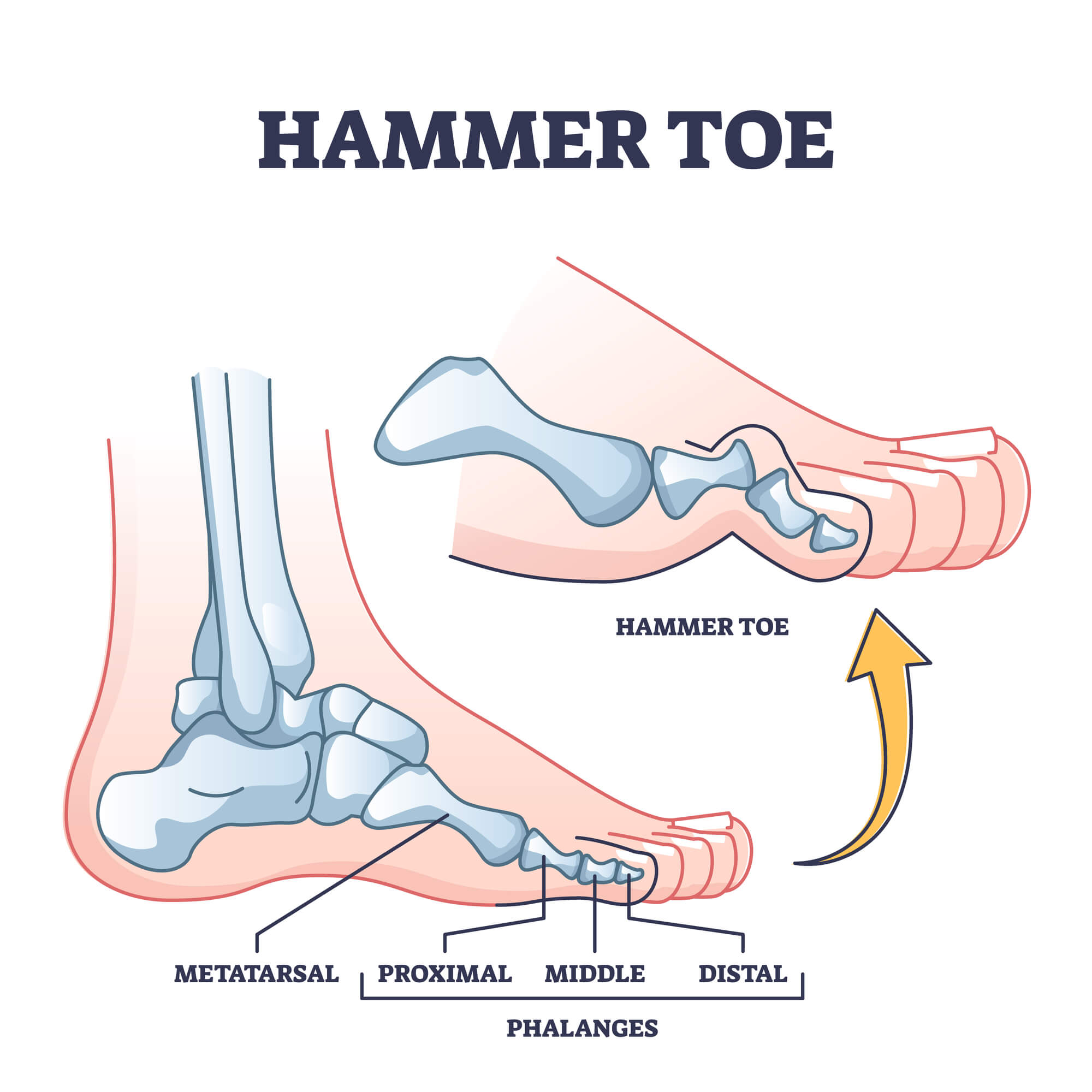
What are Mallet Toes?
A mallet toe is similar to a hammertoe, but it affects the joint at the end of the toe rather than the middle joint. This deformity causes the toe tip to bend downward, creating a "mallet" shape.
Symptoms of Mallet Toes
The most common symptom of a mallet toe is a corn or callus on the top of the affected joint. Other symptoms may include pain or discomfort when wearing shoes, difficulty moving the affected toe, and a bent appearance of the toe.
Causes of Mallet Toes
Like hammertoes, mallet toes can be caused by wearing shoes that are too tight or too narrow. Foot injuries, arthritis, and medical conditions such as diabetes can also cause mallet toes.
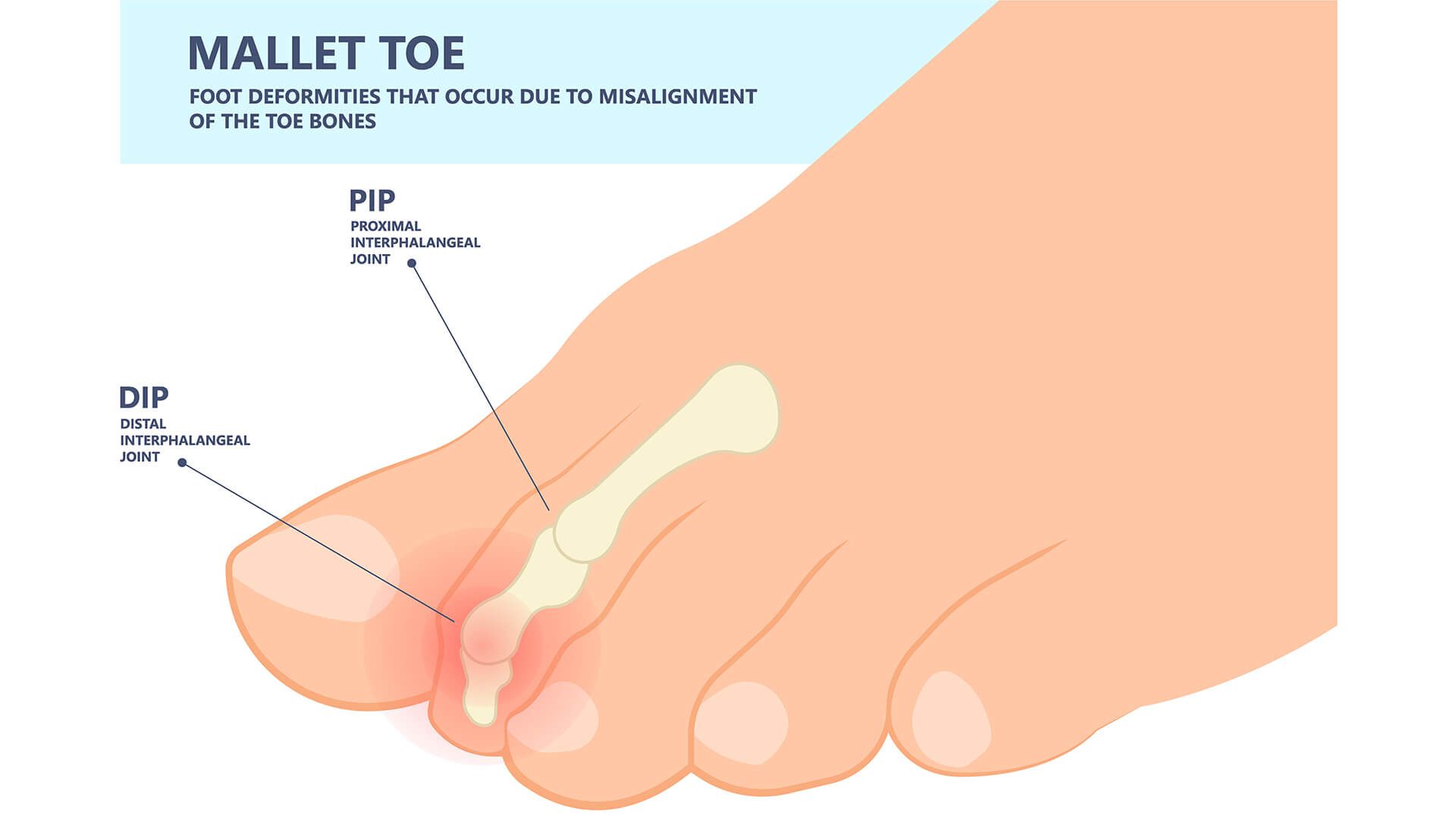
What are Claw Toes?
A claw toe is a deformity that causes the toe's middle joint to bend upward and the end joint to bend downward, creating a "claw" shape. This deformity can occur in any toe, but it most commonly affects the smaller toes.
Symptoms of Claw Toes
The most common symptom of a claw toe is a corn or callus on the top of the affected joint. Other symptoms may include pain or discomfort when wearing shoes, difficulty moving the affected toe, and a bent appearance of the toe.
Causes of Claw Toes
Like hammertoes and mallet toes, claw toes can be caused by wearing shoes that are too tight or too narrow. Foot injuries, arthritis, and certain medical conditions such as diabetes can also cause claw toes.
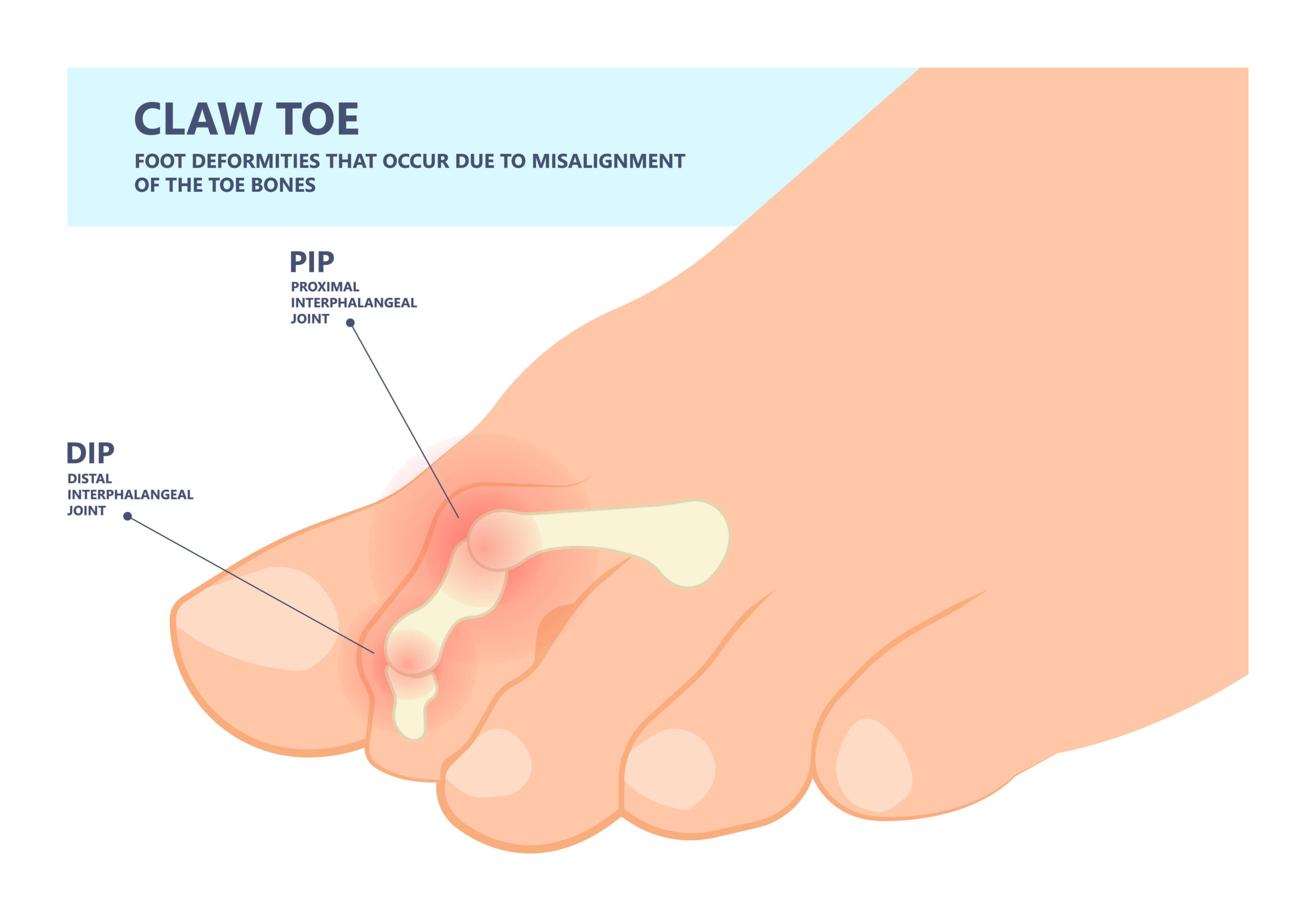
Treatment Options for Hammertoes, Mallet Toes, and Claw Toes
Non-surgical Treatments
Several non-surgical treatment options exist for hammertoes, mallet toes, and claw toes. These may include:
- Wearing properly fitting footwear: It's important to wear shoes with plenty of room in the toe area to avoid cramming the toes. This can help alleviate pressure on the affected joint and prevent further deformity.
- Using orthotics or inserts: Orthotics or inserts can help redistribute weight and relieve pressure on the affected joint.
- Padding corns or calluses: Placing padding on corns or calluses can help protect the affected area and alleviate discomfort.
- Stretching exercises: Stretching exercises can help improve flexibility and mobility in the toes.
Surgical Treatments
In some cases, surgery may be necessary to correct a hammertoe, mallet toe, or claw toe. There are several surgical options that a podiatrist can discuss with you, including:
- Tendons and ligaments surgery: This surgery involves repositioning the tendons and ligaments in the affected toe to correct the deformity.
- Joint fusion surgery: This surgery involves fusing the joints of the affected toe to straighten the deformity.
- Joint replacement surgery: This surgery involves replacing the affected joint with an artificial joint to straighten the deformity.
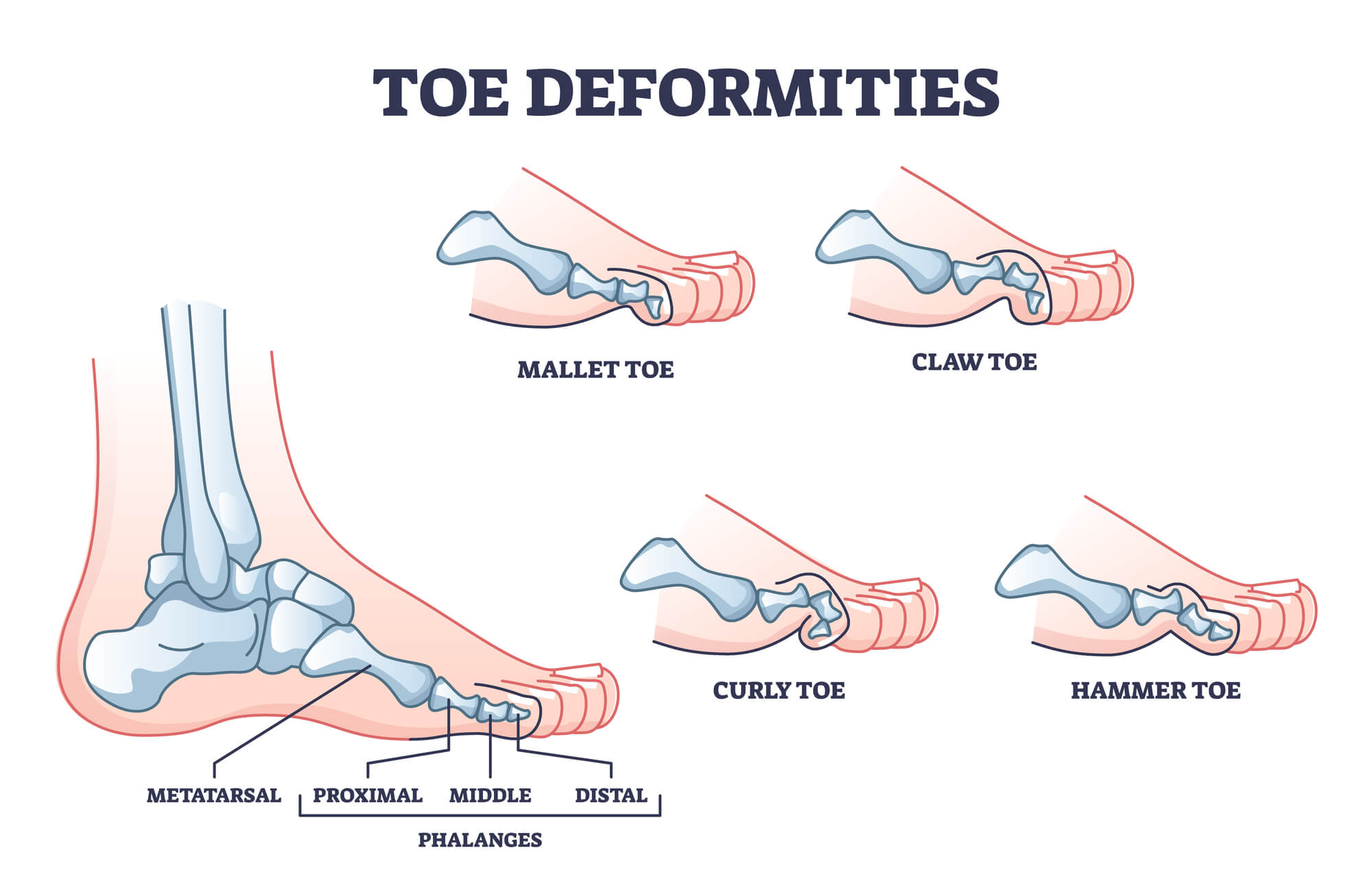
Preventing Hammertoes, Mallet Toes, and Claw Toes
There are several things you can do to prevent the development of hammertoes, mallet toes, and claw toes:
- Wear properly fitting footwear: It's important to wear shoes with plenty of room in the toe area to avoid cramming the toes.
- Avoid high heels: High heels can place extra pressure on the toes, increasing the risk of deformities.
- Practice good foot hygiene: Keeping your feet clean and dry can help prevent the development of corns and calluses, which can lead to deformities.
- Stretch your toes regularly: Stretching your toes can help improve flexibility and mobility in the toes.
Conclusion
Hammertoes, mallet toes, and claw toes are common toe deformities that can cause discomfort and difficulty wearing shoes. Understanding the differences between these conditions and the treatment options available to manage them is important. If you're experiencing problems with your toes, seeing a podiatrist for a proper diagnosis and treatment plan is a good idea. With proper care and attention, it's possible to manage these conditions and improve the health and function of your toes.

